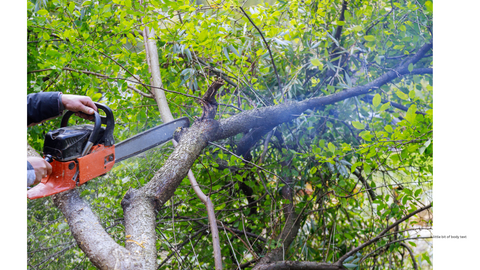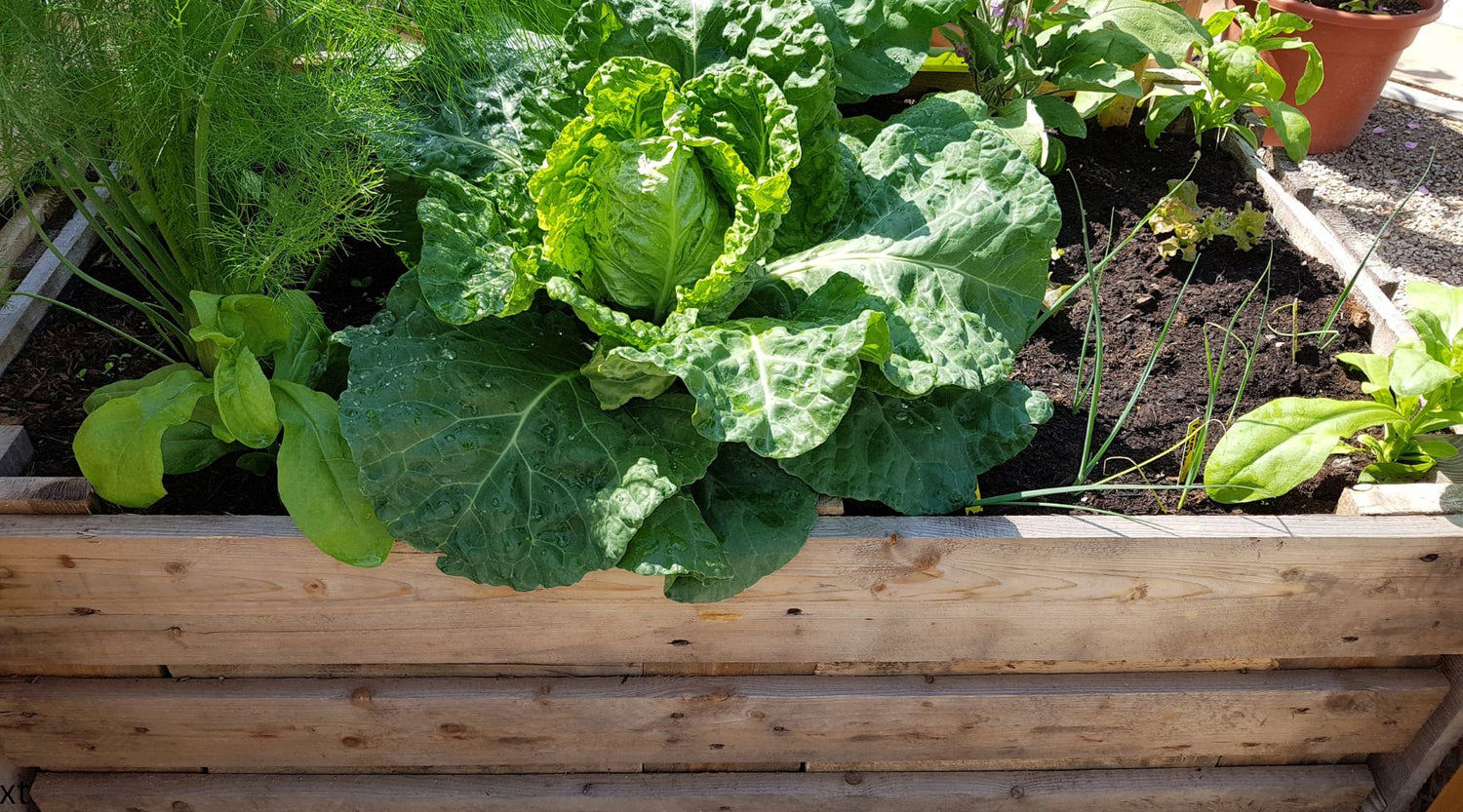As the days shorten and temperatures drop, preparing your garden for winter is essential to ensure your plants survive and thrive during the cooler months. While Australian winters are milder than in many parts of the world, different regions experience varying degrees of cold. Whether you're in the temperate south or the subtropical north, these tips will help you get your garden ready for winter.
1. Assess Your Garden
Start by taking a look around and evaluating the current state of your garden. Identify which plants are thriving and which need extra care or removal to make way for something better. Take note of any plants that may not survive the winter without protection so you can work to protect them during the coming months.
2. Clean Up

- Remove Dead Plants and Debris: Clear out any dead or dying plants. This helps prevent pests and diseases from overwintering in your garden. Dead or decaying branches on trees are not only unsightly but can also be dangerous—especially during winter. Storms, cold weather, and damp can make them an accident waiting to happen. Winter is the ideal time to get your chainsaw out and bring old trees down to size. If you're in need of a new chainsaw, check out our chainsaw collection with free shipping.
- Weed Thoroughly: By removing weeds during the cooler months, you can prevent them from spreading and competing with your desired plants for nutrients and space. Additionally, the soil is often more manageable in winter, making it easier to extract weed roots completely. Eliminate backache and stooping with the Wonder Weed Puller - the perfect solution for easy weeding in lawns.
- Clean the Greenhouse: Greenhouses and poly grow tunnels are utilized year-round, making it challenging to maintain them in optimal condition, particularly regarding the glass or poly sheeting. Various factors, from pollution to water residue, can obstruct maximum sunlight from reaching your delicate plants and seedlings. Winter is the perfect time for a thorough cleaning to prepare for another year of protected growth.
3. Pruning
Many people opt to prune their plants in winter, and for good reason. Winter pruning significantly lowers the risk of disease or infection. During this season, most plants are dormant, with their energy concentrated in the root systems rather than in the stems, branches, or leaves. This reduces shock and decreases the likelihood of the plants dying. Ensure your pruning secateurs are sharp and sterilized before use and between plants. Begin by removing any damaged, diseased, or dead wood, which is necessary for all plant varieties. For top growth, cut directly above the outward-facing buds closest to the main stem or trunk. Aim to make these cuts as close to the bud as possible to prevent die-back. Make cuts at a 90° angle to allow water to run off and the wound to dry. Don't hesitate to prune heavily; most plants are surprisingly resilient.
4. Spraying for Pests & Weeds

- Spraying for hibernating pests: In Australia, spraying for hibernating garden pests during winter is an effective strategy to protect plants. During this season, many insects enter a dormant state, making it an ideal time to target them with pest control measures. By applying horticultural oils or appropriate insecticides, you can disrupt their lifecycle before they become active in the warmer months. This proactive approach helps minimise pest populations and potential damage to your garden, ensuring healthier plants in the spring. Always follow safety guidelines and choose environmentally friendly products to protect beneficial insects and the broader ecosystem.
- Weed Spraying: Spraying for weeds in winter requires a strategic approach due to the dormant state of many plants and the potential impact of cold temperatures on herbicide effectiveness. Selective herbicides, tailored to target specific types of weeds while sparing desirable plants, are often preferred during this season. Careful consideration must be given to weather conditions, as freezing temperatures can render some herbicides ineffective. Additionally, timing is crucial, as spraying too early may not effectively control weeds that haven't yet germinated, while waiting too late risks allowing weeds to establish themselves before spring. While spraying for weeds in winter can be challenging, it can also be an effective component of a comprehensive weed management strategy, helping to keep weed populations in check and minimise competition for resources when the growing season resumes. Visit our range of Garden Sprayers made for the job.
5. Protecting Sensitive Plants
- Frost Protection: Use frost cloths or old sheets to cover sensitive plants on cold nights. Consider moving potted plants to a sheltered location.
- Watering: Water your garden in the morning so plants have time to absorb moisture before temperatures drop at night.
6. Soil Care & Mulching
- Enrich the Soil: Add compost or well-rotted manure to your soil to replenish nutrients and recover from the heavy feeding in summer. This helps improve soil structure and fertility for the next growing season.
- pH Testing: Winter time is the perfect time to test your soil's pH and adjust if necessary. Some plants prefer more acidic or alkaline conditions.
- Choose the Right Mulch: Organic mulches like straw, bark chips, or compost are ideal. Spread a layer of mulch around your plants, but keep it away from the stems to prevent rot.
7. Lawn Care
Lawn care in Australia during winter involves a few strategic practices to maintain a healthy lawn despite the cooler temperatures and slower grass growth. Start by mowing less frequently, ideally every three to four weeks, and keep mower blades higher to avoid stressing the grass. Aerate the soil to improve air circulation and nutrient absorption, which can be particularly beneficial in compacted areas. Fertilize lightly with a slow-release fertilizer to provide essential nutrients without encouraging excessive growth. Keep an eye out for weeds and remove them promptly to prevent them from taking over. Additionally, ensure proper drainage to avoid waterlogging, and consider overseeding thin patches to promote a lush, even lawn come spring. Regularly raking fallen leaves and debris will also help prevent disease and maintain the lawn’s overall health.
8. Planting for Winter

- Cool-Season Vegetables: Growing cool-season vegetables is an excellent way to extend your gardening season and enjoy fresh, homegrown produce even during the cooler months. Popular cool-season vegetables include leafy greens like lettuce, spinach, and kale, root vegetables such as carrots, radishes, and beets, and brassicas like broccoli, cauliflower, and Brussels sprouts. These vegetables not only tolerate cooler temperatures but often taste sweeter and more flavourful when grown in cool weather. To successfully grow cool-season vegetables, ensure they receive adequate sunlight, well-draining soil, and consistent moisture. Consider using row covers or cold frames to provide additional protection from frost and chilly temperatures. Looking for some inspiration on what to plant, you may like our Winter Seed Pack which has 10 assorted seeds for winter planting.
- Winter Flowering Plants: Add some winter color with plants like pansies, violas, and winter roses (Hellebores).
9. Indoor Plant Care
- Light and Humidity: Ensure they get enough light and maintain humidity by misting them or using a humidity tray. It's essential to monitor the humidity levels, as indoor heating can significantly decrease moisture in the air. To combat this, consider using a humidifier or placing a tray of water near your plants to increase humidity.
- Positioning: Positioning plants near windows to maximise exposure to natural light is crucial since daylight hours are shorter in winter. If necessary, supplement natural light with artificial grow lights to ensure your plants receive adequate light for healthy growth.
- Reduce Watering: Indoor plants need less water in winter due to slower growth rates. Be mindful of overwatering, as plants typically require less water during the cooler months when growth slows down. Allow the soil to dry out slightly between waterings to prevent root rot.
- Pest Watch: Keep an eye out for pests, as they may become more prevalent in the warm, dry conditions of indoor spaces during winter. Regularly inspect your plants for signs of infestation and treat promptly if necessary to maintain their health and vitality throughout the season.
10. Garden Tools and Equipment
- Clean Tools: Thoroughly clean each tool to remove any dirt, debris, and rust that may have accumulated during the gardening season. Use a brush or cloth to scrub away dirt, and consider using a wire brush or sandpaper to remove any rust spots. After cleaning, make sure to dry the tools thoroughly to prevent rusting. Once clean and dry, inspect each tool for any signs of damage or wear, such as loose handles or dull blades, and repair or sharpen them as needed.
- Store Tools: Organise your tools in a designated storage area, such as a shed or garage, to protect them from the elements. Hang larger tools, such as rakes and shovels, on hooks or pegs to keep them off the ground and prevent damage. Store smaller hand tools in a toolbox or on a shelf to keep them organized and easily accessible. Consider applying a light coat of oil or lubricant to metal parts to further protect against rust during storage. This prolongs their lifespan and keeps them ready for spring.
By taking these steps, you'll ensure that your garden remains healthy and vibrant through the winter months, setting the stage for a flourishing spring. Happy gardening!






